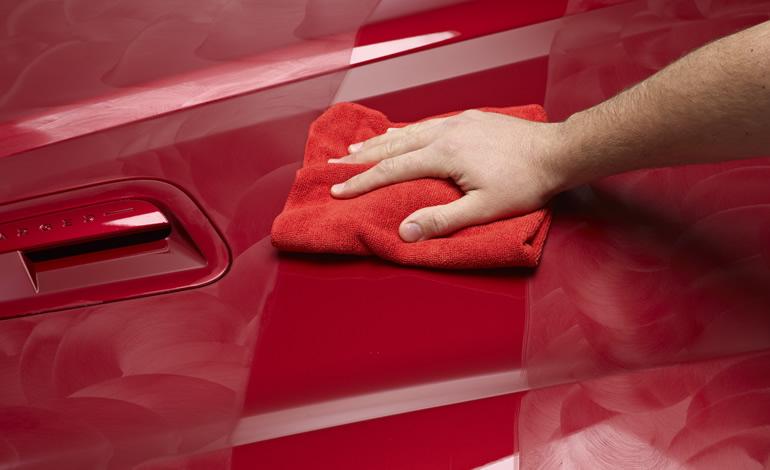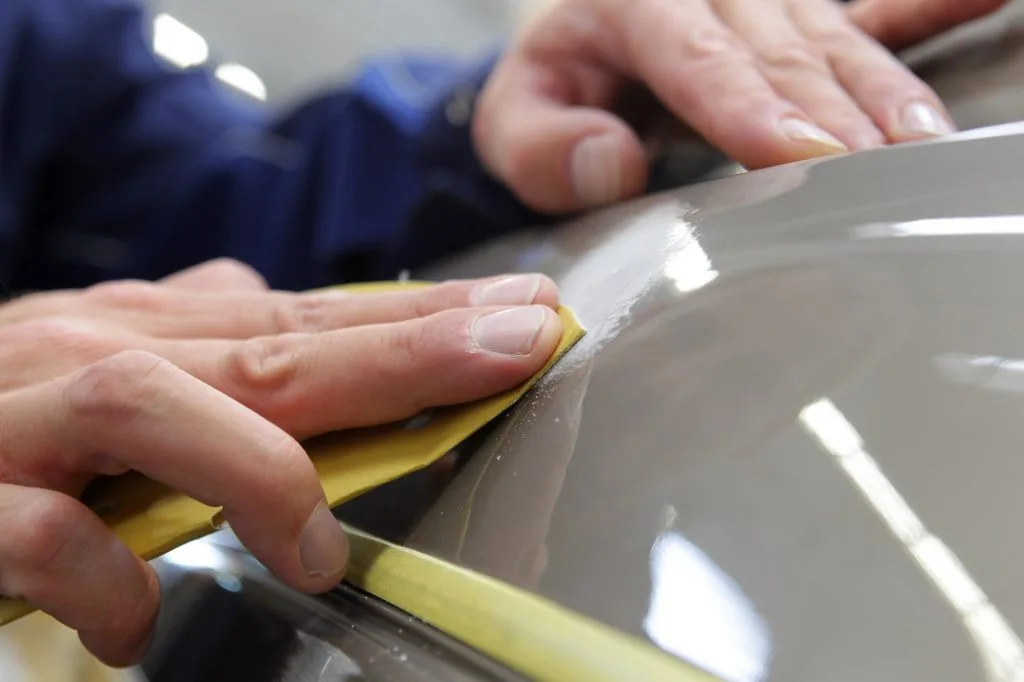We believe that you love your car. It hurts when you see a scratch or color oxidation on the surface, but unfortunately, the car ages the same as us, and it shows some damage over time.
Paint oxidation can be the worst visible damage on the surface. We can not stop it, but we can repair the surface and extend the time of the shine for longer.
Because many external factors do and will damage the surface, you should polish your vehicle when you see oxidation and prevent it from spreading on the entire exterior.
Check this article out and find more about how to remove oxidation from car paint in a few steps.

What Causes Car Paint Oxidation?
There are multiple factors that cause paint oxidation.
For example, if you are keeping your car on direct heat and UV exposure, the rays will damage the color of the vehicle and make it blurry. If you are not aware of the damage, it will increase paint oxidation and peel the clear top.
A damaged surface will allow external contaminants to enter below the clear top and damage the color and the primer. Dirt and other contaminants will damage the oils in the paint, and the shine will start to mattify over time.
Salt and acid rain can additionally enter the scratches and oxidate the car paint. All factors are closely related and contribute to damaging the car’s surface and causing oxidation.
What if it is too late?
If you were not responsible for the external appearance of your vehicle, the damage may go too far and peel off the top coat and paint, allowing the primer to get on the surface.
This is critical damage and means that your car lost its clear coat and paint. In these cases, you should remove the oxidation and repaint the entire car.
Entire car?
Yes. Entire car.
Suppose you decide on painting only the most damaged part of the surface. In that case, the new color will be visually different from the original, and it makes a huge difference in the external appearance.
The chances of repainting other parts in the future are unavoidable, and because of that, it is best to do the entire surface at once.
Read more: How to Remove Adhesive From Car Paint
How to Remove Oxidation From Car Paint
To begin the process, you will need a few tools and materials.
- Car wash kit (soap, sponge, water, soft cloth, or microfiber towel)
- Automotive masking tape
- Electric buffer and pads set
- Rubbing compound
- Car polish
- Car wax
Step 1
Begin the process on a clean surface. Wash your car and allow the moisture to dry. Wipe the excess if needed.
Park the car in a shady or covered area so the surface will cool and the vehicle will not be under direct UV exposure.
Step 2
Once you ensure the surface is dry, use the masking tape and cover all plastic parts on the surface near the oxidized area.
Add a small amount of the chosen rubbing compound to the oxidized area and slowly work with the electric buffer. Practice gentle circular motions and do not stay in one place for longer. Do this step on the entire critical area and repeat it several times.
Each time will allow the color to come through. Do not rush and make it carefully.
Step 3
Begin with the softest pad, and if it does not remove all oxidation, move to the heavier-duty pad. Choose a faster level and buff the surface multiple times.
The color should pop out, and once you see that the entire area is well buffed, turn the electric buffer off and wipe the excess compound with the microfiber towel.
Step 4
The next process requires doing the same procedure, but this time with the polish instead of rubbing compound.
Add small amounts of polish to the critical area and polish the surface with the electric buffer. This process will give the surface a better gloss and shine. Repeat the polishing motions until you reach the desired shine.
Wipe off the excess liquid with a microfiber towel and continue to the next step.
Step 5
Last but not least, waxing.
Apply the car wax on the entire car’s surface after the polishing. Waxing will give the surface a better shine and an additional layer of protection that will prevent future oxidation. You can apply the wax with the buffing machine or by hand.
If you opt for a hand application, choose soft or microfiber cloth and carefully apply it to the entire exterior.
If this process makes a huge difference between the polished and unpolished parts of the surface, you can repeat it in the places you did not do it before and make the shine equally on the entire car surface.

How to Remove Oxidation From Car Paint and Prevent Future Paint Oxidation
The previous guide requires the steps to remove oxidation beginnings. An entirely damaged surface that allowed the primer to pop out can not be fixed with the polishing process.
Prepare the needed materials and tools before starting the process and choose a polisher and compound of higher quality. Poor quality materials might not give you the desired effect.
Once you are done with the repair process, you should care about the vehicle in the future to prevent serious oxidation damages.
Use proper protection
Choose ceramic shield coating instead of traditional wax to reach the best defense against paint oxidation. The advanced formula gives a deep polish look and long surface protection.
Reduce direct sun exposure
Park your car in a covered garage or under a shade. It will prevent direct UV light exposure and extend the life of the shine.
If you have no garage or a shady spot, you can use a solid car cover. It is a more affordable option that gives the same effect and protects your car from direct external factors exposure.
Wash your car properly
Do not use chemical solvents that may additionally expand the oxidation and damage the paint. Give your car treatment and remove all the dirt that may cause scratches on the surface.
Read more: How to Fix Faded Car Paint
Conclusion
We hopefully think the above-cited methods in removing oxidation from your car paint will be helpful. The most crucial thing you should do is take better care of your car; this might help in preventing oxidation.
Don’t let your car get damaged even more by neglecting or postponing fixing it. Helping it get fixed might be the reason why you’re reading this too. Take what it’s needed and save it from oxidation.

